Ancient World Questions. Uncover Historical Insights and Biblical Connections
Delve into our curated list of questions about the ancient world, exploring historical insights and their biblical connections. Perfect for history buffs and Bible scholars alike. Discover the answers today!

What were the Classes of Citizenship in Ancient Rome?
The classes of citizenship (civitus) and legal status in ancient Rome varied over the centuries. When Rome conquered a city the defeated people would fall into one of four classes. Citizens, Municipia, Latin Allies, and Italian Allies. Other areas m...

What were the Dimensions of the Platform of the Temple?
The Platform for the Temple compound built by Herod the Great was a monumental feat, considering the steepness of the surrounding terrain. According to scholars the flat platform measured 1041 feet on the north side, 1556 feet on the east side, 929 f...
What Historical Sources do we have for the Life of Alexander the Great?
The five primary sources we have for the events in the life of Alexander are Diodorus Siculus, Quintus Curtius Rufus, Plutarch, Lucius Flavius Arrianus, and the Alexander Romance. “For I myself believe that there was at that time no race of mankind...
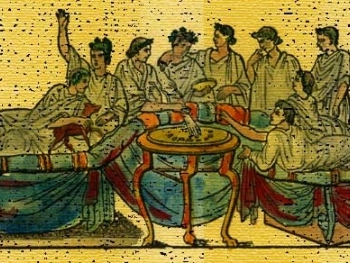
Did the Ancient Romans Dine at a Table?
The ancient Hebrews, Egyptians, and Greeks. used to eat sitting on mats spread on the floor. The Romans actually reclined on couches around a table. The couches were arranged forming three sides of a square. The open side was for the servants who wou...
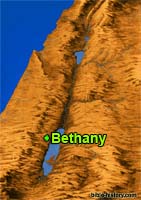
What was the Village of Bethany?
Bethany was a small village a couple miles east of Jerusalem. It is located on the eastern side of the Mount of Olives on the road to Jericho. It was a lush green area with plenty of Olive trees. Many travelers would come to rest at Bethany if the ci...
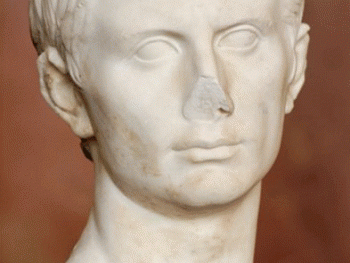
Who was the Roman Emperor when Jesus was Born?
According to history the Emperor of Rome at the time of Jesus’ birth was Augustus. In 27 B.C., the Senate of Rome voted to give him the title Augustus, which means “the respected one.” He ruled the empire until 14 A.D. In the Bible Luke refers ...
What was an Alabaster Jar?
In the Bible, an alabaster jar refers to a type of container made from alabaster stone. Alabaster is a soft, white or translucent mineral often used in ancient times for crafting vessels or containers for various purposes. One notable mention of an a...
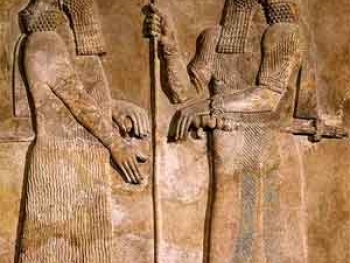
What were the Primary Sources for Assyrian History?
Scholars recognize that the primary sources for the study of ancient Assyria are the Assyrian Annals, the Assyrian Chronicles and Eponym Canon, The Assyrian King List, Assyrian Sculptures, and the Bible. The Assyrian Annals. The scribes of the chief ...
What was a Watchtower?
In the Bible, a watchtower, also known as a lookout or watchman's tower, was a raised structure used for surveillance and observation. It served as a strategic vantage point from which watchmen could keep watch over the surrounding area, looking out ...
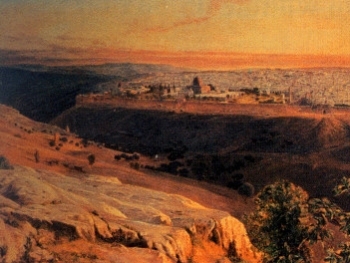
How many were in Jerusalem for the Passover of Jesus?
The main sources available estimate that the population of those living in Jerusalem during the time of Jesus was probably around 80,000 to 100,000 citizens. But during the Passover hundreds of thousands of Jews from the Diaspora would pour into Jeru...
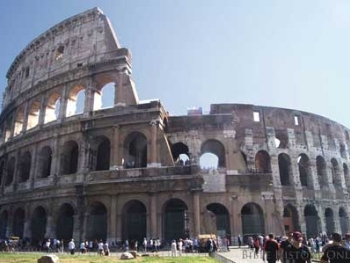
Was the Colosseum Around During the Time of Jesus?
The Colosseum was known in ancient Rome as the Flavian Amphitheatre, named after the 3 emperors who were all involved in its construction. Vespasian conceived the idea and began building in 72 AD and his son Titus dedicated it in 80 AD with a 100 day...
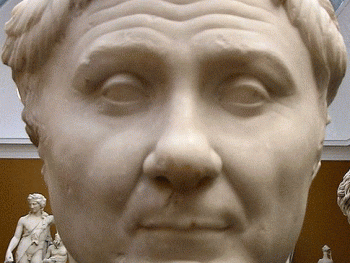
Why was Pompey Referred to as “The Great”?
Pompey was a military genius and his soldiers recognized this and referred to him as “Magnus” which means the great, thus the name Gnaeus Pompeius Magnus. Source: Pompey the Great...
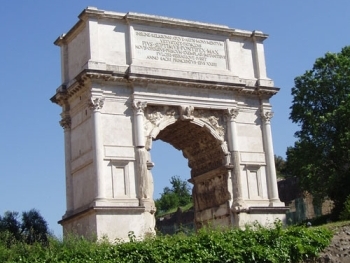
What did the Arch of Titus Commemorate?
The Arch of Titus is one of Rome’s most famous monuments. It was built to commemorate the victories of Titus and Vespasian in the war against the Jews and their complete destruction in 70 AD. One wall relief inside the arch shows the spoils of the...
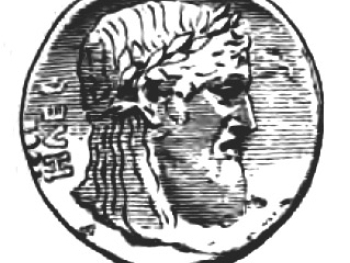
Was Zeus the Same to the Romans as Jesus to the Christians?
In Christianity, Jesus is the One true God who came to earth clothed in human flesh. In Greek and Roman mythology Zeus (Jupiter) was a celestial deity, and one of many gods. Zeus was the chief of the gods of Olympus, and he was the son of Saturn and ...
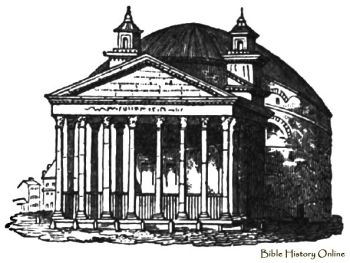
What is the Pantheon?
The Pantheon, or the temple of all the gods. It is the best preserved ancient building in Rome and is universally admired for its fine dome and beautiful columns. Source: The Pantheon...
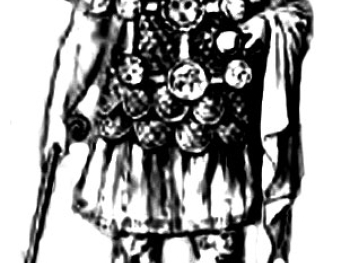
What Islands are in the Aegean Sea?
In ancient Rome the “centurion” meant “captain of 100”, and the Roman centurion was captain over 100 foot soldiers in a legion. The centurion was loyal and courageous, beginning as a soldier in the army and working their way up the ranks. The...
What was the Hostile Plough?
The Hostile Plough was used by the Romans to utterly destroy a city by burying and removing it. When the Romans were brought to wrath it was customary to drive a plough over the walls of a conquered city to signify that the ground on which it stood s...
About
Welcome to Free Bible: Unearthing the Past, Illuminating the Present! Step into a world where ancient history and biblical narratives intertwine, inviting you to explore the rich tapestry of human civilization.
Discover the captivating stories of forgotten empires, delve into the customs and cultures of our ancestors, and witness the remarkable findings unearthed by dedicated archaeologists.
Immerse yourself in a treasure trove of knowledge, where the past comes alive and illuminates our understanding of the present.
Join us on this extraordinary journey through time, where curiosity is rewarded and ancient mysteries await your exploration.
Recent posts
-

Prayers for Prophets: A Reflection on Reverence and Intercession
Prophets hold a revered status across many of the world’s major religions. As individuals chosen to convey divine messages, they are often remembered with deep respect, veneration, and love. One of the most profound ways believers express their connection to prophets is through prayers—supplications made for, to honor, or inspired... -

The Bible in Museums: Where to See Ancient Scripture Today
The Bible, as one of the most influential books in human history, has shaped not only religious beliefs but also the course of civilization. Its stories, teachings, and moral lessons have impacted art, literature, law, and culture for centuries. Today, while many people engage with the Bible through modern translations... -

Archaeologists Uncover Possible Oldest 3D Map, Dating Back 13,000 Years
A team of archaeologists has identified what may be the world’s oldest known three-dimensional map, according to a new study. The discovery was made at Ségognole 3, a prehistoric sandstone rock shelter located south of Paris, France. While the site has been known since the 1980s for its ancient engravings—including depictions... -

Archaeologists Discover 3,500-Year-Old Tomb of ‘Missing Pharaoh’ in Egypt
Burial Site of Thutmose II Hailed as the Most Significant Find Since Tutankhamun British archaeologist Piers Litherland had spent over a decade exploring the remote western wadis near Egypt’s Valley of the Kings when he made a breathtaking discovery—an ancient staircase leading to a long-lost royal tomb. What he and his... -

Ancient Jewish Ritual Bath Unearthed Near Rome Sheds Light on Jewish Life in the Roman Empire
Archaeologists in Italy have uncovered the remains of an ancient Jewish ritual bath, or mikveh, near Rome, marking the oldest known discovery of its kind outside the biblical regions of Israel and its surroundings. The mikveh was found during an ongoing excavation in Ostia Antica, an ancient port city located 16...
Main Menu
- Ancient Assyrian Social Structure
- Ancient Babylonia
- Ancient Canaan During the Time of Joshua
- Ancient History Timeline
- Ancient Oil Lamps
- Antonia Fortress
- Archaeology of Ancient Assyria
- Assyria and Bible Prophecy
- Augustus Caesar
- Background Bible Study
- Bible
- Biblical Geography
- Fallen Empires - Archaeological Discoveries and the Bible
- First Century Jerusalem
- Glossary of Latin Words
- Herod Agrippa I
- Herod Antipas
- Herod the Great
- Herod's Temple
- High Priest's in New Testament Times
- Jewish Literature in New Testament Times
- Library collection
- Map of David's Kingdom
- Map of the Divided Kingdom - Israel and Judah
- Map of the Ministry of Jesus
- Matthew Henry Bible Commentary
- Messianic Prophecy
- Nero Caesar Emperor
- Online Bible Maps
- Paul's First Missionary Journey
- Paul's Second Missionary Journey
- Paul's Third Missionary Journey
- Pontius Pilate
- Questions About the Ancient World
- Tabernacle of Ancient Israel
- Tax Collectors in New Testament Times
- The Babylonian Captivity
- The Black Obelisk of Shalmaneser
- The Books of the New Testament
- The Court of the Gentiles
- The Court of the Women in the Temple
- The Destruction of Israel
- The Fall of Judah with Map
- The History Of Rome
- The Incredible Bible
- The Jewish Calendar in Ancient Hebrew History
- The Life of Jesus in Chronological Order
- The Life of Jesus in Harmony
- The Names of God
- The New Testament
- The Old Testament
- The Passion of the Christ
- The Pharisees
- The Sacred Year of Israel in New Testament Times
- The Samaritans
- The Scribes
Ancient Questions
- Why Do the Huldah Gates Appear Different in Ancient Replicas and Modern Photos?
- Who Were the Main Powers in Italy Before the Roman Empire?
- How did the ancient Egyptians build the pyramids?
- What were the major trade routes and trading practices of the ancient world?
- Who Appointed Pontius Pilate Procurator of Judea?
- What is the Passover Papyrus?
- What is the Extent of the Old Testament World?
- What was an Alabaster Jar?
- Who was the Roman Emperor when Jesus was Born?
- What was the Hostile Plough?
Bible Study Questions
- How do we discern God’s will for our lives?
- What is the importance of the Great Commission in spreading the Gospel?
- An In-Depth Analysis of the New English Translation (NET): Aspects, Comparisons, Impact, and Implications for Bible Interpretation
- Exploring the Good News Bible (GW): Historical Aspects, Comparative Analysis, Impact on Bible Study, and Theological Distinctives
- How do we interpret and understand apocalyptic literature in the Bible?
- How do we cultivate a deeper relationship with God through prayer and meditation?
- Analyzing the New Century Version (NCV): Language Examples and Comparison with Other Bible Translations
- An In-Depth Examination of the NASB1995: Key Aspects, Comparison to the Original NASB, Impact on Bible Study, and Theological Distinctives
- The Holman Christian Standard Bible (HCSB) and Christian Standard Bible (CSB): A Detailed Historical Post
- The Christian Standard Bible (CSB): An In-Depth Analysis